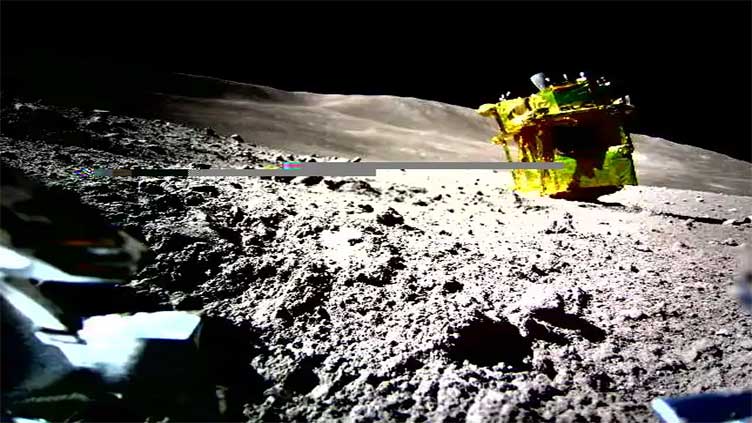Abnormality in engine: Japan's spacecraft lands on moon upside-down

Technology
The lander touched down at a speed of around 1.4 meters per second
(Web Desk) - The Japan Aerospace Exploration Company shared the first image of its lander on the lunar surface, revealing that the spacecraft touched down on the moon upside-down.
It’s a remarkable recovery for the spacecraft, which experienced an “abnormality in the main engine” that affecting the landing orientation when it was just 50 meters above the lunar surface, JAXA said in an update Thursday.
Despite this abnormality — which resulted in the spacecraft’s solar panels being unable to charge, because they are not oriented properly wit the sun — the country nevertheless became the fifth nation ever to pull off a soft landing on the moon.
Even after the main engine was lost, SLIM’s onboard software continued to autonomously guide the spacecraft’s descent.
The lander touched down at a speed of around 1.4 meters per second or less, below the design range; but the lateral velocity and orientation were also outside the design range, resulting in the nose-down position.
Remarkably, the lander ended up just 55 meters east of the original target landing site.
JAXA officials said that the main purpose of the SLIM mission, which was to demonstrate the pinpoint landing technology to within 100 meters accuracy, is therefore considered a success.
Earlier this week, JAXA officials said the spacecraft had powered down on the surface, as planned, to avoid over-discharge of the batteries connected to the solar cells.
The solar cells are facing west, so the agency is waiting to see if they can generate power to the spacecraft once the sun’s beams change direction.
The lander was carrying two rovers; one of the rovers, called Lunar Exploration Vehicle-2, or SORA-Q, is responsible for the photo. The rovers were ejected from the spacecraft before landing.
Officials further said that they are investigating the cause of the loss of one of the two main engines, and that they will provide updates as the investigation progresses.
The next time the sun will face westward toward the lander’s solar cells will be in about one week’s time, so we’ll soon know whether a mission recovery is possible.



